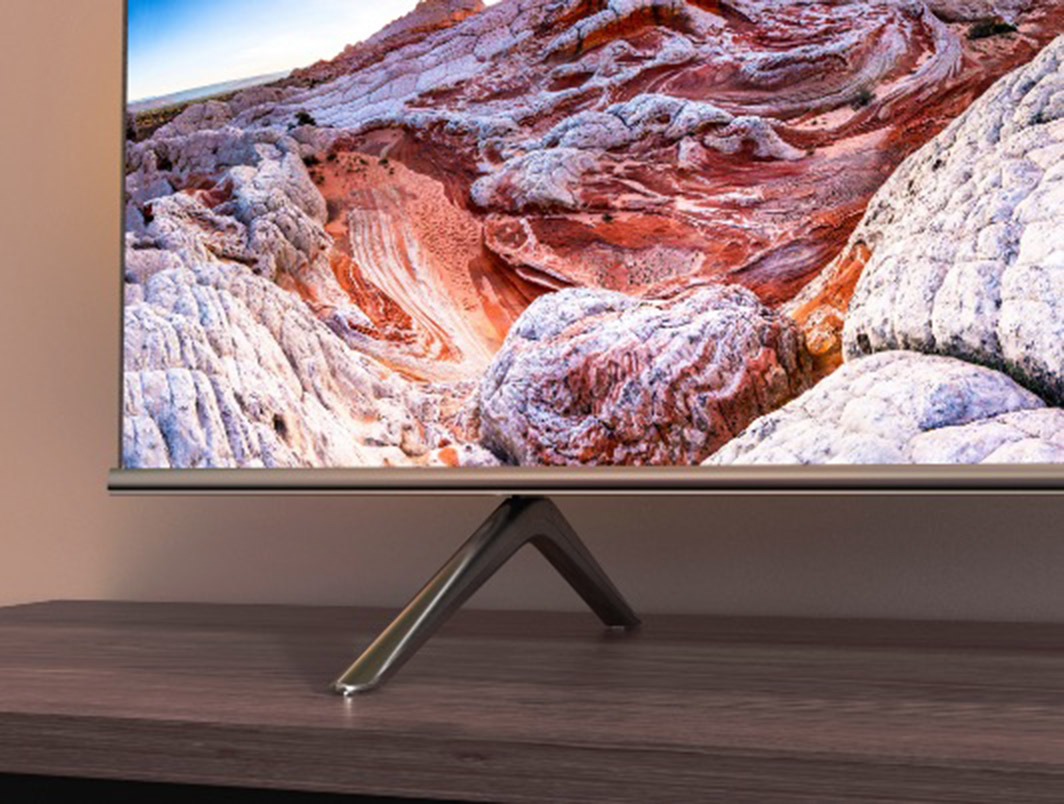In recent years, OLED TVs have been gaining popularity due to their superior picture quality and sleek design. The term OLED stands for Organic Light Emitting Diode, which means that each pixel on the screen emits its own light. This results in deeper blacks, brighter colors, and better contrast than traditional LED/LCD TVs.
The technology behind OLED TVs is quite different from that of LED/LCD TVs. While the latter uses a backlight to illuminate the entire screen, OLED TVs can turn individual pixels on and off. This results in more precise control over brightness and color. Additionally, OLED technology allows for a wider viewing angle, meaning that the picture quality remains consistent even when viewed from the side.
Another advantage of OLED TVs is their thin and lightweight design. This makes them easier to mount on walls or move around the room. However, despite all of these benefits, many consumers are concerned about the lifespan of OLED TVs. In this article, we will delve into the topic of how long OLED TVs typically last and what factors can affect their longevity.
Table of Contents
Understanding the Lifespan of OLED TVs
OLED TVs are the talk of the town, with their superior picture quality and stunning visuals. But, have you ever wondered how long they last? Well, the lifespan of an OLED TV is a crucial consideration for anyone looking to invest in a high-end television.
The lifespan of an OLED TV is determined by the lifespan of its organic materials. OLED stands for Organic Light Emitting Diode, which means that the pixels on the screen emit light when an electric current is passed through them. However, the organic materials used in OLED TVs degrade over time, which can lead to a decrease in picture quality and eventually, the failure of the TV.
Now, the lifespan of an OLED TV can vary depending on several factors, including usage, brightness settings, and environmental conditions. For instance, OLED TVs that are used for extended periods of time or are set to high brightness levels may degrade faster than those that are used less frequently or at lower brightness levels. Additionally, OLED TVs that are exposed to high temperatures or humidity may also degrade faster.
Despite these factors, OLED TVs are generally considered to have a longer lifespan than traditional LCD TVs. In fact, OLED TVs can last anywhere from 50,000 to 100,000 hours, which is significantly longer than the lifespan of an LCD TV, which typically lasts around 50,000 hours.
However, it’s important to note that the lifespan of an OLED TV is not a guarantee. While OLED TVs are designed to last for many years, there is always the possibility of premature failure due to manufacturing defects or other issues. Therefore, to ensure the longevity of your OLED TV, it’s important to follow the manufacturer’s recommendations for usage and maintenance.
The lifespan of an OLED TV is determined by the lifespan of its organic materials and can vary depending on usage, brightness settings, and environmental conditions. So, if you want to enjoy your OLED TV for a long time, make sure to take good care of it and follow the manufacturer’s guidelines.
Factors Affecting the Lifespan of OLED TVs
OLED TVs are renowned for their exceptional picture quality and breathtaking visuals. However, as with any electronic device, they have a finite lifespan. The lifespan of an OLED TV is influenced by various factors, including usage, brightness, ambient temperature, humidity, and the quality of the OLED panel.
Usage
Usage plays a significant role in determining the lifespan of your OLED TV. The more you use your TV, the shorter its lifespan will be. OLED TVs are designed to last for a specific number of hours, and every time you turn on your TV, you are using up some of those hours.
Brightness
The brightness of your OLED TV can also impact its lifespan. While OLED TVs are known for their bright and vivid colors, the brighter you set your TV, the shorter its lifespan will be. This is because the brighter the TV, the more power it uses, and the more heat it generates, which can damage the OLED panel.
Ambient Temperature
Ambient temperature is another crucial factor that can affect the lifespan of your OLED TV. OLED TVs are sensitive to temperature changes, and if your TV is exposed to high temperatures for an extended period, it can damage the OLED panel and shorten the lifespan of your TV.
Humidity
High humidity can also damage the OLED panel. If your TV is exposed to high humidity for an extended period, it can cause the OLED panel to deteriorate, leading to a shorter lifespan.
Panel Quality
The quality of the OLED panel used in your TV can also impact its lifespan. High-quality OLED panels are designed to last longer and are less likely to suffer from burn-in or other issues that can shorten the lifespan of your TV.
As you can see from this list, panel quality is only one of the factors. If you invest in an extremely high quality (and expensive) TV, you may still get the same longevity out of a TV as someone with their cheaper TV in better conditions.
By taking care of your TV and following the manufacturer’s recommendations, you can extend the lifespan of your OLED TV and enjoy stunning visuals for years to come.
OLED TV Maintenance Tips to Prolong Lifespan
OLED TVs are renowned for their exceptional picture quality and longevity, but they require proper maintenance to ensure they last as long as possible. To help you achieve this, we’ve compiled a list of OLED TV maintenance tips that will help you prolong the lifespan of your TV.
First, it’s important to avoid screen burn-in, which can occur when a static image is displayed on the screen for an extended period. To prevent this, it’s recommended that you avoid leaving static images on the screen for too long. Instead, use the TV’s screen saver or turn off the TV if you need to pause a movie or show.
Second, keeping the TV clean is crucial. Dust and dirt can accumulate on the TV’s screen and vents, which can affect its performance. To clean the screen, use a soft, dry cloth, and to remove dust from the vents, use a vacuum cleaner.
Third, it’s essential to avoid exposing the TV to extreme temperatures. OLED TVs are sensitive to direct sunlight and heat sources, so it’s best to keep them away from these. Additionally, storing the TV in a cold or damp place should be avoided.
Fourth, using the TV’s energy-saving features can help prolong its lifespan. OLED TVs consume a lot of energy, so features such as automatic brightness adjustment, sleep mode, and power-saving mode can be beneficial.
Last, updating the TV’s firmware can help fix bugs and improve its performance, ultimately prolonging its lifespan. Manufacturers release firmware updates regularly, so it’s recommended that you keep your TV’s firmware up to date.
By following these OLED TV maintenance tips, you can ensure that your TV continues to provide exceptional picture quality for years to come.
OLED TV Warranty and Replacement Options
When it comes to purchasing an OLED TV, there are a few key factors to consider. One of the most important is the warranty and replacement options available. This is because, as with any electronic device, there is always the possibility of defects or malfunctions occurring.
Most manufacturers offer a standard one-year warranty for their OLED TVs. This warranty covers any defects or malfunctions that may occur during that time. However, some manufacturers may also offer extended warranties for an additional fee. These extended warranties can provide additional peace of mind and protection for your investment.
In the event that your OLED TV does experience a defect or malfunction, it is important to know what replacement options are available. Some manufacturers may offer a repair service, where a technician will come to your home to fix the issue. This can be a convenient option, as it allows you to avoid the hassle of shipping your TV back to the manufacturer.
Other manufacturers may offer a replacement program, where they will send you a new TV and pick up the defective one. This can be a good option if you need a replacement quickly, as it can often be faster than waiting for a repair technician to come to your home.
It is important to note that not all defects or malfunctions may be covered under the warranty. For example, if the TV is damaged due to user error or accidental damage, it may not be covered. It is important to read the warranty carefully and understand what is and is not covered.
Overall, OLED TVs are known for their durability and long lifespan. However, it is always a good idea to consider the warranty and replacement options available when making a purchase. This can help ensure that you are protected in the event that something goes wrong with your TV.
Wrapping Up: Is an OLED TV Worth the Investment?
When it comes to investing in a TV, there are a lot of factors to consider. But if you’re looking for a truly top-notch viewing experience, an OLED TV is definitely worth considering. These TVs offer superior picture quality, with deep blacks and vibrant colors that really pop. And while they may be more expensive than other types of TVs, their longevity and durability make them a smart investment in the long run.
But don’t just take our word for it – the increasing availability of OLED TVs in the market means that prices are becoming more competitive, making them more accessible to a wider range of consumers. So if you’re in the market for a new TV and are willing to invest in a high-quality viewing experience, an OLED TV is definitely worth considering. With their superior picture quality, deep blacks, and vibrant colors, OLED TVs are a great choice for movie and TV enthusiasts.
Frequently Asked Questions
How long do OLED TVs last?
OLED TVs are known for their longevity. They can last for up to 100,000 hours, which is equivalent to 10 years of continuous use. However, this lifespan can vary depending on usage and other factors.
What factors can affect the lifespan of an OLED TV?
The lifespan of an OLED TV can be affected by several factors, including usage, brightness settings, and environmental conditions. For example, if you use your TV for extended periods or at high brightness levels, it may not last as long as if you use it for shorter periods or at lower brightness levels. Similarly, if you expose your TV to high temperatures or humidity, it may not last as long as if you keep it in a cool, dry place.
Can OLED TVs suffer from burn-in?
Yes, OLED TVs can suffer from burn-in, which is when a static image is displayed on the screen for an extended period, causing a permanent image to be burned into the screen. However, this is less of a concern with newer OLED TVs, as they have features such as pixel shifting and screen savers that help prevent burn-in.
Can OLED TVs be repaired?
Yes, OLED TVs can be repaired, but it can be expensive. If your TV is still under warranty, it may be repaired for free or at a reduced cost. If it is out of warranty, you may need to pay for repairs out of pocket, which can be costly. It is important to weigh the cost of repairs against the cost of a new TV before deciding whether to repair or replace your OLED TV.

